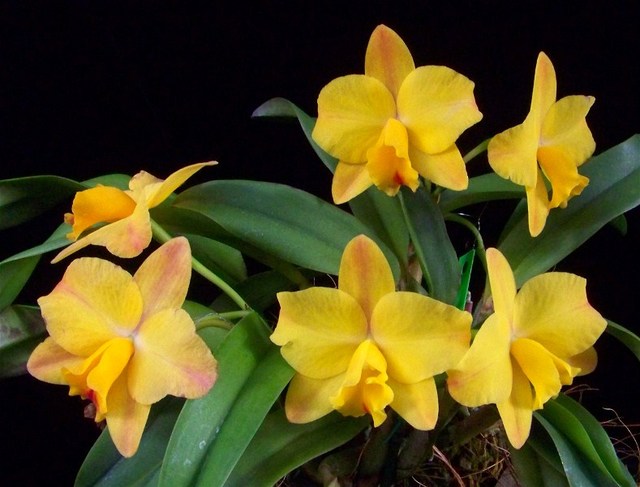C. Mango Spice 'MBF'
This plant is matched to the orchid database
Grower is Mark Reinke
Located in Walhalla, SC, United States
Binomial:
(Beaufort x California Apricot)
Variety:
Cultivar:
MBF
Ploidy:
Awards:
Vendor:
Description:
Culture: C Mango Spice is C. Beaufort x California Apricot and therefore 50% C. (S.) coccinea. Mini-catts with such a high percentage of that species can be difficult to grow here in the hot, humid Southeast. I have found that at least under greenhouse conditions, they do much better in a small basket than potted. They do well mounted too, but will take longer to reach specimen size. This particular plant, with flowers that can approach perfection, was purchased as an unflowered seedling from Carter & Holmes some time back. I almost lost it growing in a pot, but transferred the remaining portion that was still alive in to a 4 inch wooden basket and it has exploded with growth in just a few year. I count NINE leads on the plant now, and there are some flowers almost all year long as each new growth emerges. I liked it so much that I purchased a group of seedlings from a West Coast grower that were a re-make of the same cross and treated them the same way. But none of those seedlings have ever performed well for me, leading me to wonder if the specific parents that were selected for performance in the west may not be suited to do well in the east. Even though they have the same names as the ones used in the east coast plant, there is always genetic variation in a hybrid, so a batch of seedlings raised in a particular climate will naturally cull out the ones that don't do well there and favor the ones that do. I have a number of other mini-catt crosses from the west coast that struggle even though that are growing side by side with similar plants of east coast origin that flourish. So, now, I'm working on crosses using the best performing plants to produce new mini-catt hybrids that are more likely to succeed in sultry summers.
This plant record is available for viewing by Public.
Plant record added almost 11 years ago.
